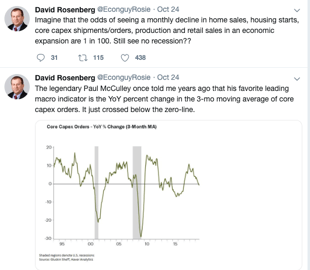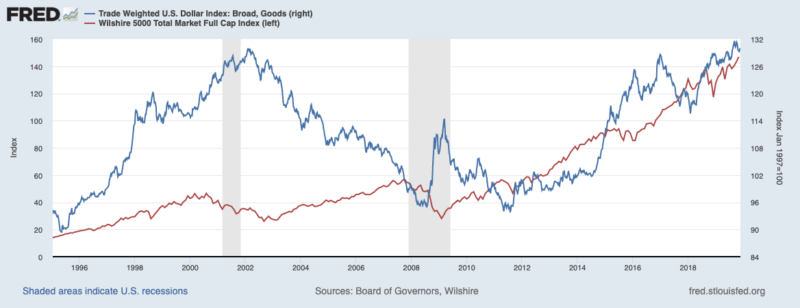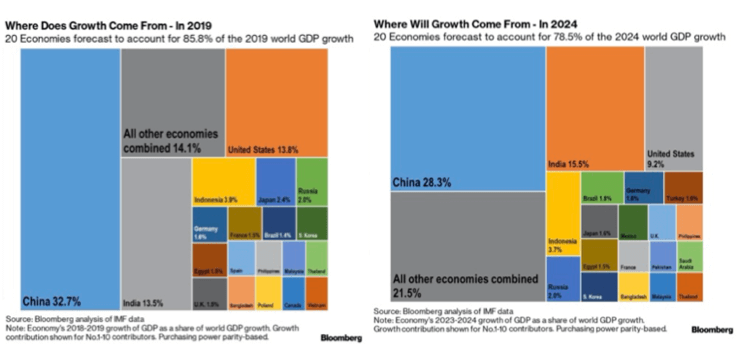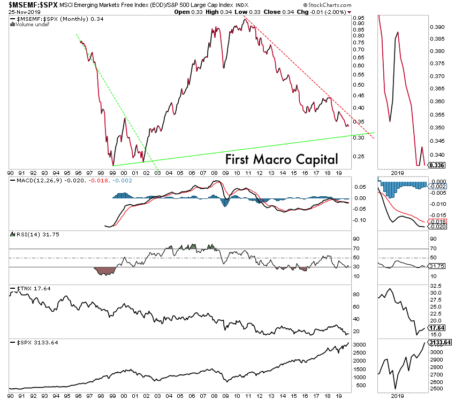BY PAUL

While many are wondering how high the S&P 500 can. What happened in past decades when all the market’s attention is primarily focused on one equity over others? After every major bubble equity bubble ended, Nikkei in the 80’s, then Europe in the 90’s, followed by Emerging Markets in the 00’s, each equity market has yet to recover since their peaks. Now to today, is the S&P 500 setting up to repeat? Big Tech is more than 20% of the S&P 500 and the Nasdaq 100. If investors are going to be selling the S&P 500, which is primarily big tech stocks, investors need to buy something else, but what is it?

What would indicate a slowdown in the U.S is coming? A slowdown in Core CAPEX orders on a YoY basis.

This all coincides with a set up for a top in the US dollar.

We think this recession will be less severe than 2008 because it is never the same as the most recent cycle since investors get caught up in recency bias, and with 2008 being a severe recession, we don’t see it in the cards.

During the last commodity cycle, the S&P 500 was essentially flat from 2001-2008 and was done when you adjust for a fall in the US Dollar Trade Weighted Index that fell from 130 to below 100 during that time.
If money flows out of the U.S. as we finish this cycle and enter the next cycle, where will the money go? First off, it’s to the emerging market countries that are expected to power ahead the world growth over the next 4-5. We also think commodities countries within emerging markets will surprise investors to the upside because of the rotation into commodities during this time period, like Brazil and Russia.

In U.S. Dollar terms, Brazil and Russia have outperformed the S&P 500 since 2016, and we think they are only getting started. Why? Their economies are heavily weighted to commodities and will benefit from an accelerating commodity cycle.

Could we see this again?

Emerging markets are back to their 2001 lows relative to the S&P 500. Emerging markets in $ terms continues to set higher lows since 2002 after being in a decade of sideways trading, a breakout is potentially coming in 2020. We will let it show us the way to avoid any near-term value trap.

Let’s be clear
- A blow-off top in the US stocks is 100% possible
- The US equity bubble ending will and a weaker US dollar higher will be the catalysts for non-US dollar assets like emerging markets and commodities.
- There is a greater upside to emerging markets and commodities.
- If you don’t look at commodities and emerging markets now, because you don’t understand. It would be at least another 20 years BEFORE you have the risk: rewards set up for a once in a generation opportunity.